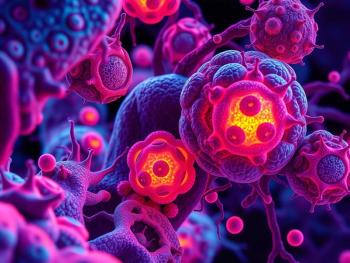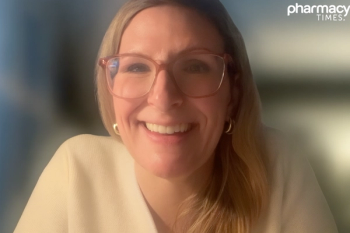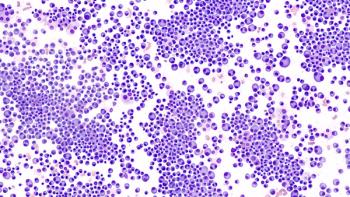
Future Directions for the Treatment of CLL
Bhavesh Shah, RPh, BCOP, and Ryan Jacobs, MD, discuss emerging agents in the pipeline and the future treatment landscape for CLL.
Episodes in this series

Bhavesh Shah, RPh, BCOP: I want to talk through the future, with BTK [Bruton tyrosine kinase] inhibitors and CLL [chronic lymphocytic leukemia]. There was a lot of exciting stuff presented at ASH [American Society of Hematology Annual Meeting]. Maybe you can talk about 1 or 2 things that you’re excited about for CLL in the next year or so.
Ryan Jacobs, MD: I think 2022 is going be a very active year in CLL and new approvals. I’m excited about having additional options for existing targets. Zanubrutinib is going to be a clear 1 that will likely become available. I’m very interested in seeing that ALPINE study that we referenced, and the head-to-head comparison of ibrutinib vs zanubrutinib in published manuscripts, so we can look at the data in detail on how those 2 drugs compare now that we have the ELEVATE-RR trial for acalabrutinib vs ibrutinib. It’s always good to have more options for our patients: that third BTK inhibitor and second-generation BTK inhibitor option. I’m hopeful that umbralisib and ublituximab will get approved as a PI3K inhibitor, anti-CD20 combination—the U2 [umbralisib, ublituximab] regimen from the UNITY-CLL study presented at ASH—to give us a better-tolerated PI3K inhibitor option.
What do we do with our existing agents? Is there a better way to treat? The obvious 1, which we’ve talked about, is combining Bruton tyrosine kinase inhibitors with venetoclax over a defined timeline. This might be a very appealing option for many patients—maybe not all, but many patients. I’m excited about that opportunity to involve both BTK and BCL2 inhibition and maybe get long-term deep remissions with a year’s worth of all oral therapy in some circumstances. That will be really neat.
In terms of new targets and options, I hope the first that will become available in 2022—at least on a limited basis for our double-refractory patients, who have progressed on BTK and BCL2—is the alternative-site BTK inhibitor pirtobrutinib. There are others in development, but that 1 appears to be the furthest along in its development. This agent has been shown to be active in patients who have progressed on BTK and have a mutation at that C481S-binding site, because it binds in a totally different way, unlike zanubrutinib, acalabrutinib, and ibrutinib, which are covalent inhibitors. Pirtobrutinib is a noncovalent inhibitor that binds at a different site on Bruton tyrosine kinase, and it’s a very specific and well-tolerated drug. That will give us an additional target option for patients, another in our growing list of different targets to have.
One that has been in development for many years in CLL and has been approved in other areas is CAR [chimeric antigen receptor] T-cell therapy. We hope can give curative results to a fraction of patients, as we’ve seen in other lymphomas. Many times, our patients with CLL are aged out of being able to get cellular therapy that’s available to them, like allogeneic stem cell transplant. The average age of a patient with CLL is 70 years old. The average age of a patient with CLL who needs treatments all the way up is 74 years old, and that’s just first line. When we run out of our convenient options, we’re left with not much that we can do for these older patients. Having a CAR T-cell therapy available for those select few who get to that point would be nice for those patients.
Bhavesh Shah, RPh, BCOP: Thank you for sharing that. I’m sure you saw the New York Times came out with the 10-year data on a patient with CLL. It’s definitely exciting to know that there’s so much coming into pipelines for CLL.
Thank you for this opportunity to educate everyone on the changing landscape of BTK. I want to thank all our viewers and audience. I hope you found this Pharmacy Times® Insights to be rich and informative.
Transcript Edited for Clarity
Newsletter
Stay informed on drug updates, treatment guidelines, and pharmacy practice trends—subscribe to Pharmacy Times for weekly clinical insights.



















































































































































































































